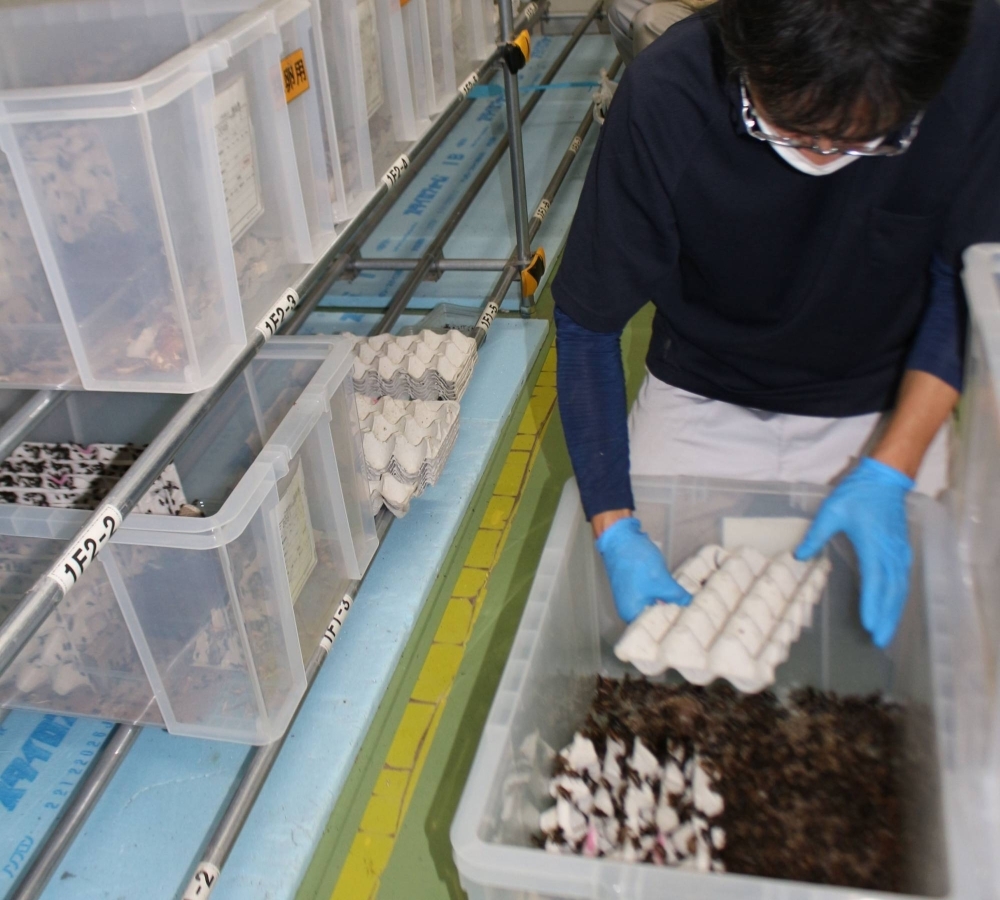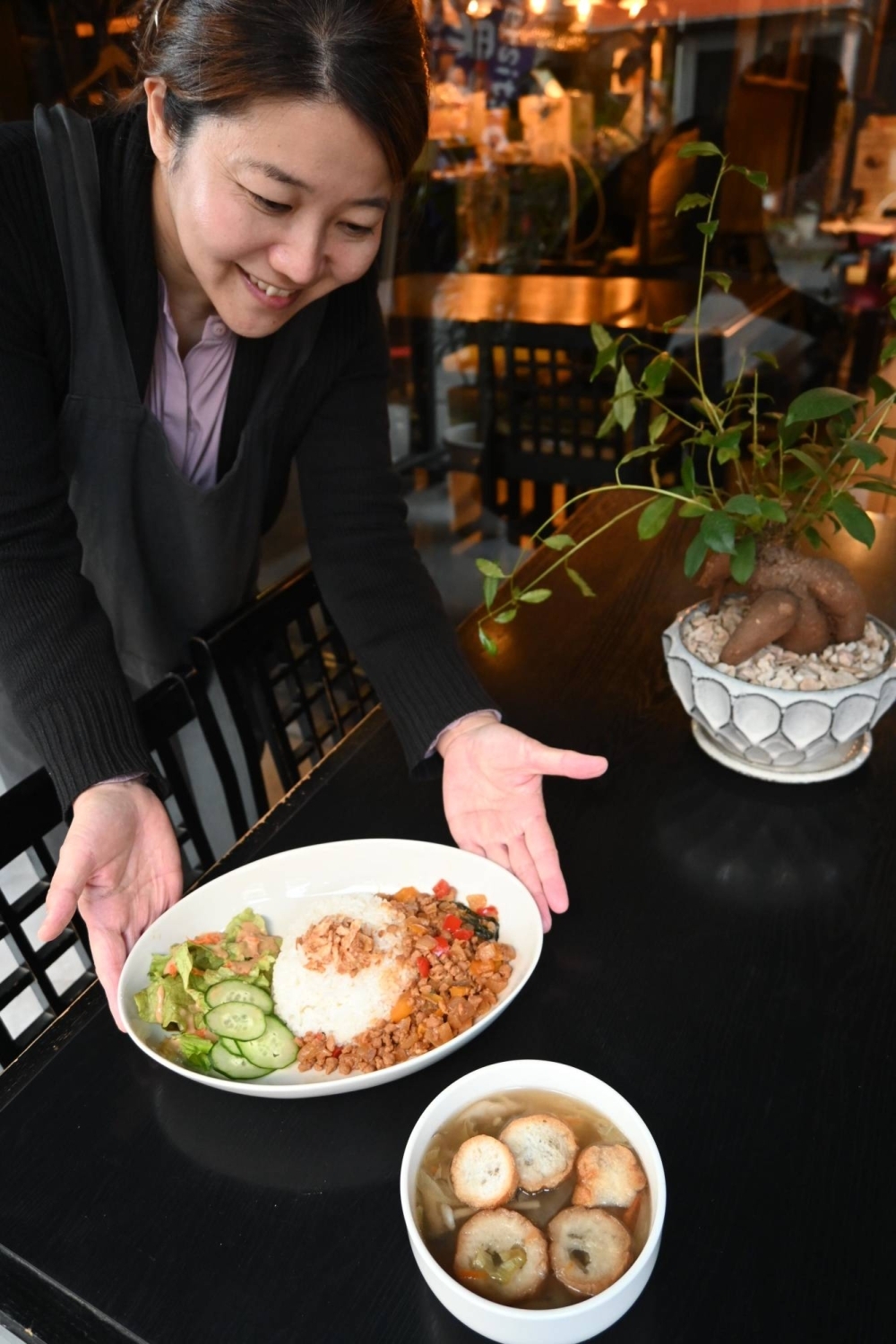From japantimes.co.jp
In response to increasing demand for food due to global population growth, next-generation protein sources have emerged as substitutes for meat, including insects and soy meat.
Amid growing popularity for plant-based meat overseas as dietary habits diversify, some businesses in the Tohoku region are also exploring the field of alternative protein.
At Hygente Technology’s plant in Shinjo, Yamagata Prefecture, edible crickets are being raised in an orderly row of wardrobe cases. The crickets, which mature in about a month, are washed and boiled, before being frozen, dried or powdered for shipment.
The company, whose main business is metal plating, began cricket farming in 2021 when it sought to diversify its business operations. It decided to take up cricket farming as a business that could help alleviate the global food shortage.
Munetoshi Yamaji, 65, who is in charge of the company’s cricket business, said the aim of the project is to mass-produce protein. “Crickets grow fast, with their weight increasing a thousandfold within a month of their birth. There is no other animal like it," he explained.
In raising crickets, the company utilizes its expertise in making industrial products. Under thorough manufacturing process management, the plant's indoor temperature is maintained at around 30 degrees Celsius and its humidity, at just over 20%, ideal conditions for raising the insects.
Hygente offers a wide range of products using powdered crickets, including simple salt-and-pepper flavoured snacks, karintō sweet snacks, pasta and shichimi chili pepper.
The similarity between the outer skin of crickets and those of shrimp and crabs has led to plans by the company to explore using the insects as raw material for producing glucosamine and other health foods.
The Food and Agriculture Organization of the United Nations (FAO) in 2013 said that insects are a promising food and feed ingredient, with some 9 billion people needing to be fed worldwide by 2050.
In Japan, the Agriculture, Forestry and Fisheries Ministry began to promote research and development in entomophagy under its food system strategy in 2021, which led to an increasing number of companies raising insects.
Consumer concerns
The practice of eating insects is not one widely accepted by consumers. According to a survey conducted by Kahoku Shimpo via the Line app last October, 65% of respondents said they "do not want to include insects in their diet." This proportion far outnumbers the 16% who were in favour of including insects in their diet.
Last September, participants of a study on entomophagy held in Morioka, Iwate Prefecture, voiced their concerns over the consumption of crickets and other insects that are not commonly consumed as food.
Tomoko Isoda, 61, the secretary-general of the prefecture’s consumer group federation that organized the meeting, pointed out that eating locusts and bee larvae has been a practice handed down across generations as part of Japan’s food culture.
“But people have no experience eating crickets, and we don't know how safe they are in terms of allergies and other health concerns,” she said.
The government does not mandate the inclusion of "insects" on food allergy labels, leaving it up to companies to decide whether to warn consumers about the possibility of them being a source of allergens. Hygente, for one, labels its products with a warning that the consumption of crickets can trigger shellfish allergy.
To alleviate consumer concerns, a group of companies and researchers involved in the insect business in July 2022 published a set of guidelines for the production of edible crickets. The guidelines cover aspects including food, water, harvesting methods and sanitation management.
The consumer apprehension is no surprise to Hygente's Yamaji, who notes that insects are still considered a bizarre form of food. The company aims to build trust among consumers by creating awareness of edible crickets and promoting their consumption at local events, he said.
Plant-based meat
Substitute proteins such as soybean meat is also gaining traction.
Sekai Gohan (World Cuisine), a restaurant that opened in Sendai last May, serves dishes from around the world using plant-based meat as part of its menu.
Among these is gapao rice (basil chicken rice), a classic Thai dish. The restaurant substitutes soybean meat for minced chicken; once prepared, its sweet and spicy flavour is hardly distinguishable from the conventional meat version of the dish.
The restaurant offers a menu that is both halal — in adherence to Muslim precepts — and vegan-friendly.
Manager Tomomi Hama, 46, said the concept of the restaurant is that people with different dietary habits can gather around the table to eat together. “We prepare dishes that meet the needs of customers of various backgrounds," she said.
One of the halal dishes on the restaurant’s menu is imoni, which is prepared using deep-fried fu (wheat gluten) instead of pork. Imoni is a traditional Sendai dish that is usually made of boiled taro and pork along with other vegetables in a bowl of soup.
Hama said the deep-fried fu that the restaurant uses is called Sendai Fu, which is manufactured by Yamagataya Shouten in Tome, Miyagi Prefecture. "Sendai Fu produces a good broth and has a nice texture,” Hama said in explaining how she sees new possibilities in traditional foodstuff.
In the meantime, Yamagataya Shouten is redefining the marketing of its Sendai Fu as a vegan and halal food ingredient by promoting the richness of its wheat-derived protein and its sponge-like dough that can increase the volume of dishes.
A year after it obtained its vegan and halal certifications in 2018, it released a collection of vegan recipes that prescribes Sendai Fu in place of meat, such as "Sendai Fu cutlet with deep-fried vegetables in grated radish soup" and "Sendai Fu and vegetable gyōza dumpling.”
While the company has not seen its sales of Sendai Fu rise significantly due to the lingering effects of the COVID-19 pandemic, its CEO Hideyuki Yamagata, 62, is hopeful.
“We hope that as the number of visitors to Japan increases, more restaurants and other establishments will start handling our product. Many people from Western countries are vegans or vegetarians,” Yamagata said.
¥4 trillion market
According to research firm Fuji Keizai, demand for plant-based alternative protein products is growing amid diversifying dietary habits. While the global market size for these products was worth ¥1.2 trillion ($7.9 billion) as of 2022, it is expected to grow to ¥4 trillion by 2030 along with an increase in health-conscious consumers and greater awareness of the global food crisis.
This market is not without its hurdles, however. Manufacturers of soybean meat, the leading plant-based protein, are finding it difficult to stimulate domestic demand in Japan.
Tatsuya Nakamura, the 51-year-old president of Kamaishi, Iwate Prefecture-based soybean meat producer Ajitech Finefoods, sees a gap between media attention on actual sales.
“There are many vegetarians overseas, but not many in Japan," Nakamura said, adding that the industry needs to go beyond buzz over the product.
“We are at the crossroads on whether demand for soybean meat will expand or slow down,” he said. “The industry as a whole needs to promote the health and environmental advantages of soybean meat."
https://www.japantimes.co.jp/news/2024/04/08/japan/japan-alternative-meat/


No comments:
Post a Comment